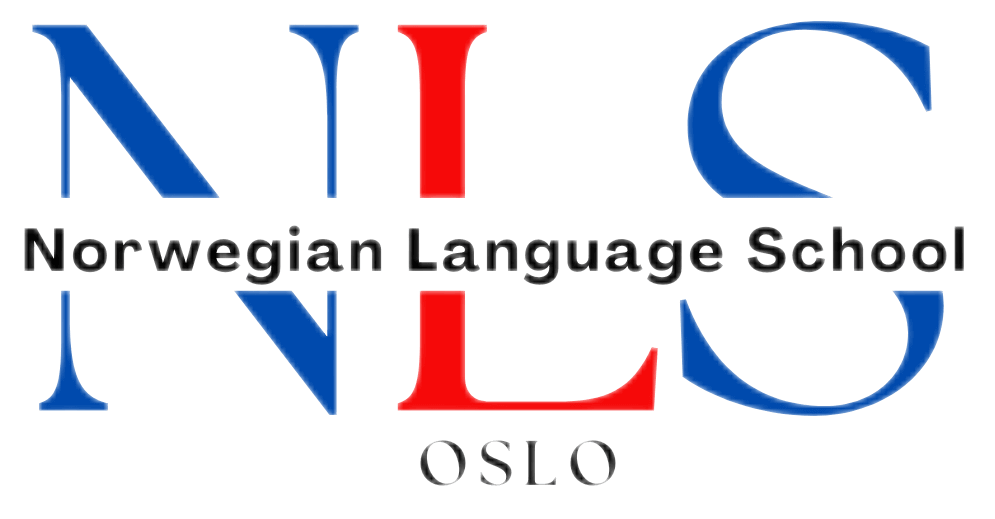

Are You a B1 or a B2 A Practical Guide to Spanish Proficiency Levels
The Common European Framework of Reference for Languages (CEFR) serves as a comprehensive guideline for assessing language proficiency across Europe and beyond. Established by the Council of Europe, this framework categorises language skills into six distinct levels, ranging from A1 (beginner) to C2 (proficient). The CEFR not only provides a clear structure for learners and educators but also facilitates the recognition of language qualifications across different countries.
This standardisation is particularly beneficial for those seeking employment or educational opportunities in multilingual environments, as it allows for a common understanding of language abilities. The CEFR is divided into three broad categories: A (basic user), B (independent user), and C (proficient user). Each category is further subdivided into two levels.
For instance, within the B category, B1 represents an intermediate level where learners can handle everyday situations, while B2 indicates a more advanced independent user who can engage in discussions and understand more complex texts. This framework not only aids in self-assessment but also provides a roadmap for learners to track their progress and set achievable goals in their language learning journey.
Table of Contents
ToggleSummary
- The Common European Framework of Reference for Languages (CEFR) is a guideline used to measure language proficiency.
- B1 Spanish proficiency level indicates an intermediate level, while B2 indicates an upper-intermediate level.
- Assess your current Spanish language skills by taking a CEFR-aligned proficiency test.
- Common characteristics of B1 Spanish proficiency include being able to understand the main points of clear standard input on familiar matters.
- Common characteristics of B2 Spanish proficiency include being able to interact with a degree of fluency and spontaneity.
Differentiating Between B1 and B2 Spanish Proficiency Levels
The distinction between B1 and B2 proficiency levels in Spanish is significant, as it marks a transition from basic conversational skills to a more nuanced understanding of the language. At the B1 level, learners are typically able to communicate in familiar situations, express opinions, and describe experiences. They can understand the main points of clear standard input on familiar matters, such as work, school, and leisure activities.
However, their vocabulary may still be limited, and they might struggle with more complex grammatical structures. In contrast, B2 proficiency signifies a higher degree of fluency and comprehension. Learners at this level can understand the main ideas of complex texts on both concrete and abstract topics, including technical discussions in their field of specialisation.
They are capable of interacting with native speakers with a degree of spontaneity and can produce clear, detailed text on a wide range of subjects. This level of proficiency allows for greater participation in discussions and debates, making it essential for those who wish to engage more deeply with Spanish-speaking cultures or professional environments.
Assessing Your Current Spanish Language Skills

Before embarking on the journey from B1 to B2 proficiency, it is crucial to assess your current Spanish language skills accurately. This self-evaluation can be conducted through various means, such as taking online placement tests, engaging in conversation with native speakers, or reflecting on your ability to understand written texts. Identifying your strengths and weaknesses will provide a clearer picture of where you stand and what areas require improvement.
Additionally, consider keeping a language journal where you document your daily experiences with Spanish. This could include new vocabulary learned, phrases used in conversation, or reflections on your understanding of grammar rules. By regularly reviewing your entries, you can track your progress over time and gain insights into your learning patterns.
This self-assessment process is not only beneficial for setting realistic goals but also for maintaining motivation as you advance through the levels.
Common Characteristics of B1 Spanish Proficiency
Learners at the B1 level exhibit several key characteristics that define their proficiency in Spanish. One notable trait is their ability to handle everyday conversations with relative ease. They can discuss familiar topics such as family, work, and hobbies, often using simple sentences and basic vocabulary.
While they may still make grammatical errors or struggle with more complex structures, their overall communication is generally effective for day-to-day interactions. Another characteristic of B1 proficiency is the ability to understand the main points of clear standard speech on familiar matters. This includes following conversations in social settings or comprehending straightforward media content such as news articles or television programmes aimed at a general audience.
However, B1 learners may find it challenging to grasp idiomatic expressions or nuanced meanings that require a deeper cultural understanding. As such, they often benefit from exposure to authentic materials that can enhance their comprehension skills.
Common Characteristics of B2 Spanish Proficiency
B2 learners demonstrate a more advanced command of the Spanish language compared to their B1 counterparts. One defining characteristic is their ability to engage in discussions on a variety of topics with a degree of fluency and spontaneity. They can articulate their thoughts clearly and effectively, making them capable of participating in debates or discussions without significant hesitation.
This fluency allows them to express opinions and arguments more convincingly. Moreover, B2 learners possess a broader vocabulary and a better grasp of complex grammatical structures. They can understand the main ideas of both written and spoken texts that deal with abstract concepts or specialised subjects.
This level of proficiency enables them to read literature or academic articles with greater ease and to appreciate subtleties in tone and style. As a result, B2 learners are often more confident in their ability to navigate social situations and professional environments where Spanish is spoken.
Tips for Advancing from B1 to B2 Proficiency

Transitioning from B1 to B2 proficiency requires dedication and strategic planning. One effective tip is to immerse yourself in the language as much as possible. This could involve watching Spanish films or television shows without subtitles, listening to Spanish music or podcasts, or reading books that challenge your current level.
Immersion helps reinforce vocabulary and grammar while exposing you to different accents and dialects. Another valuable strategy is to engage in regular conversation practice with native speakers or fellow learners. Language exchange partners can provide real-time feedback and help you refine your speaking skills.
Additionally, consider joining conversation clubs or online forums where you can discuss various topics in Spanish. This not only enhances your speaking abilities but also builds your confidence in using the language in diverse contexts.
Resources for Practicing and Improving Spanish Language Skills
A wealth of resources is available for those looking to improve their Spanish language skills at both the B1 and B2 levels. Online platforms such as Duolingo, Babbel, and Rosetta Stone offer interactive lessons tailored to different proficiency levels. These platforms often include gamified elements that make learning enjoyable while reinforcing vocabulary and grammar concepts.
In addition to digital resources, traditional materials such as textbooks and workbooks can be invaluable for structured learning. Books specifically designed for B1 and B2 learners often include exercises that target specific skills like reading comprehension, writing practice, and listening activities. Furthermore, consider utilising language learning apps that focus on vocabulary building through flashcards or spaced repetition techniques.
Common Challenges for B1 and B2 Spanish Learners
Despite the progress made at the B1 and B2 levels, learners often encounter several common challenges that can hinder their advancement. One prevalent issue is the fear of making mistakes while speaking or writing in Spanish. This fear can lead to hesitation during conversations or reluctance to participate in discussions, ultimately stunting language development.
Another challenge faced by learners at these levels is the complexity of grammar rules and verb conjugations in Spanish. The nuances between different tenses can be particularly confusing for those transitioning from B1 to B2 proficiency. Additionally, understanding idiomatic expressions or regional variations in vocabulary may pose difficulties as learners strive for greater fluency.
Strategies for Overcoming Challenges at B1 and B2 Levels
To overcome the challenges associated with learning Spanish at the B1 and B2 levels, it is essential to adopt a proactive approach. One effective strategy is to embrace mistakes as part of the learning process rather than viewing them as failures. Engaging in conversations with supportive peers or tutors can create a safe environment where learners feel comfortable experimenting with the language without fear of judgement.
Moreover, breaking down complex grammar rules into manageable segments can facilitate understanding. Focus on one aspect at a time—such as mastering regular verb conjugations before tackling irregular verbs—can make the learning process less overwhelming. Additionally, utilising visual aids like charts or diagrams can help clarify grammatical structures and enhance retention.
Setting Realistic Goals for Progressing in Spanish Proficiency
Setting realistic goals is crucial for maintaining motivation while progressing from B1 to B2 proficiency in Spanish. Start by establishing short-term objectives that are specific, measurable, achievable, relevant, and time-bound (SMART). For instance, aim to learn ten new vocabulary words each week or complete one chapter of a textbook within a month.
Long-term goals should also be considered; these might include preparing for an official language exam or planning a trip to a Spanish-speaking country where you can practice your skills in real-life situations. Regularly reviewing your goals will help you stay focused on your progress while allowing you to adjust them as needed based on your evolving skills.
Seeking Opportunities to Use and Practice Spanish in Real-Life Situations
Finally, one of the most effective ways to solidify your Spanish language skills is by seeking opportunities to use the language in real-life situations. Engaging with native speakers through conversation exchanges or community events can provide invaluable practice while enhancing cultural understanding. Consider volunteering with organisations that serve Spanish-speaking communities or participating in local cultural festivals where you can immerse yourself in the language.
Additionally, if you are based in Oslo or planning to visit Norway, consider enrolling in Spanish courses at the NLS Norwegian Language School. The NLS offers tailored programmes designed for various proficiency levels, including both B1 and B2 courses that focus on practical communication skills alongside cultural insights. These courses provide an excellent opportunity to refine your language abilities while connecting with fellow learners who share your passion for Spanish.
In conclusion, advancing from B1 to B2 proficiency in Spanish requires commitment, practice, and strategic planning. By understanding the CEFR framework, assessing your current skills, setting realistic goals, and seeking opportunities for real-life practice—such as enrolling in courses at NLS—you can navigate this journey successfully while enjoying the rich rewards that come with mastering a new language.
Ready to speak Spanish? Enroll for Spanish classes at the NLS Norwegian Language School in Oslo!
If you want to learn Norwegian, you can register for classes here. We look forward to hearing from you and helping you become fluent in Norwegian.





